Al Madinah is home to a wide variety of birds. From colorful parrots to majestic eagles, the diversity of birds found in the region is quite remarkable. With the city being home to many parks and gardens, the abundance of birdlife is further enhanced.
With the surrounding desert, many species of birds are also found in the area, including owls, falcons, and other predatory birds. For those who are interested in birdwatching, Al Madinah is a great place to visit.
With its unique combination of habitats, there is much to see and discover. Whether you are out for a leisurely stroll or actively birdwatching, you are sure to find a plethora of fascinating bird species in the area.
1. Rock Dove
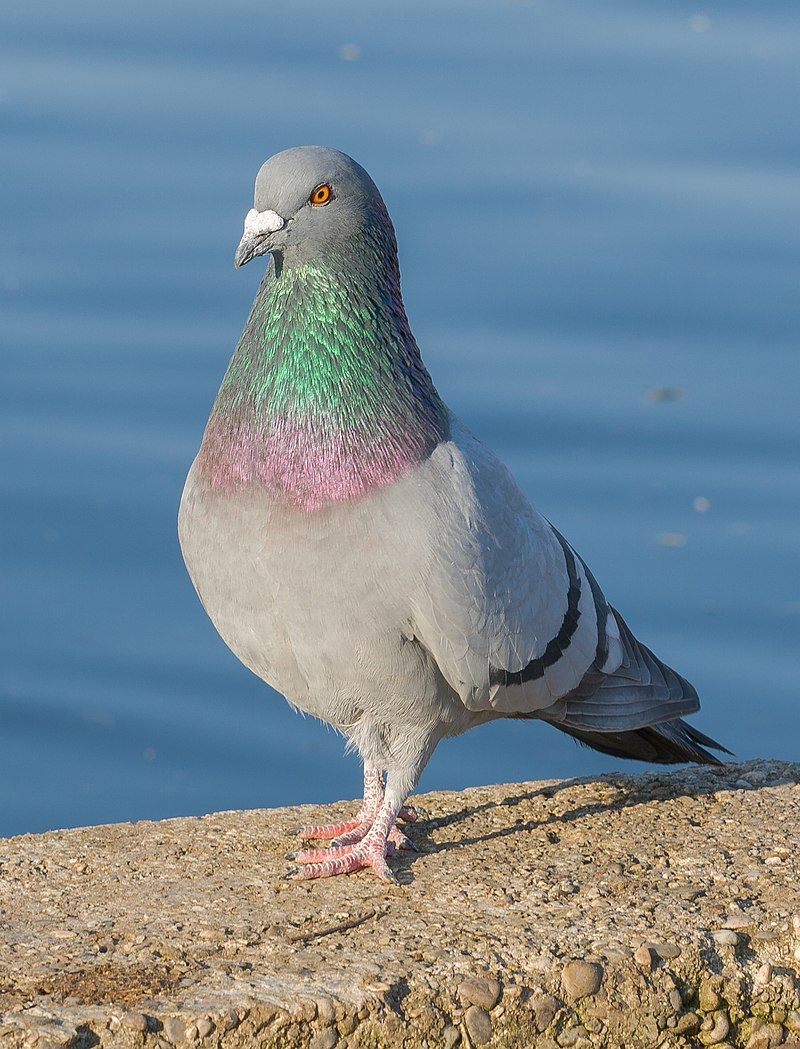
The rock dove, rock pigeon, or common pigeon is a species of bird that belongs to the family Columbidae. It is often simply referred to as the “pigeon”.
This species is the ancestor of the domestic pigeon, which is a domesticated version that is kept as a pet or for other purposes. Many domestic pigeons have escaped and multiplied in the wild, leading to an increase in the number of feral pigeons all around the world.
These feral pigeons are birds that have descended from the original rock dove species, however, they are not domesticated and live in the wild.
| Kingdom | Animalia |
| Phylum | Chordata |
| Class | Aves |
| Order | Columbiformes |
| Family | Columbidae |
| Genus | Columba |
| Species | C. livia |
2. Laughing Dove
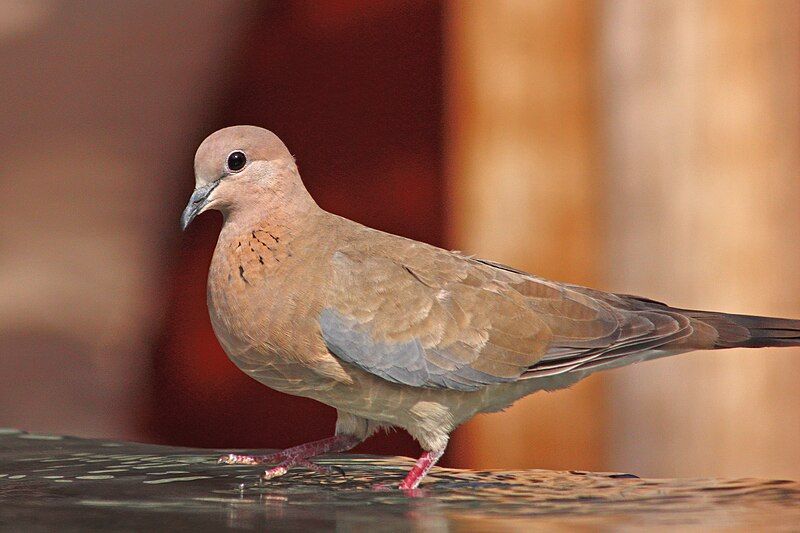
The Laughing Dove is a species of small pigeon that is native to many parts of the world, including Africa, the Middle East, South Asia, and Western Australia. It is a permanent resident in these areas and is known to breed there.
In Western Australia, the Laughing Dove has become a particularly successful species since its release from Perth Zoo in 1898. This release allowed the bird to establish itself in the wild and it has thrived since then.
The Laughing Dove is a popular bird among many birdwatchers and nature lovers, as it is relatively easy to find and observe. Its plumage is typically grey in color, and its name comes from its distinctive call, which is a low, repetitive cooing sound.
The Laughing Dove is a protected species in many countries, and their numbers are monitored closely in some areas.
While its populations are healthy in most parts of the world, conservation efforts are still important to ensure that the species is maintained and protected for future generations.
| Kingdom | Animalia |
| Phylum | Chordata |
| Class | Aves |
| Order | Columbiformes |
| Family | Columbidae |
| Genus | Spilopelia |
| Species | S. senegalensis |
3. Eurasian Collared Dove
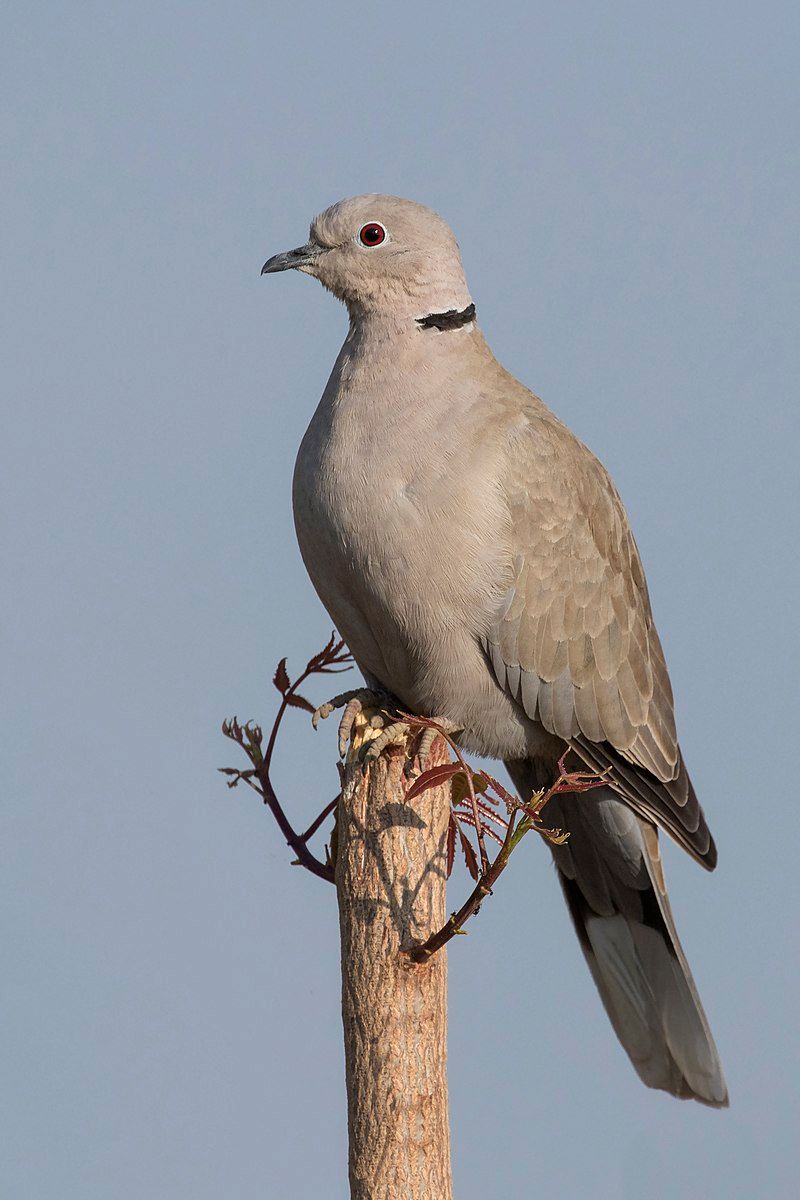
The Eurasian collared dove is a species of dove that is native to Europe and Asia. This species has been introduced to other regions as well, such as Japan, North America, and certain islands in the Caribbean.
The Eurasian collared dove is a medium-sized dove, typically ranging in size from a body length of about 32-34 centimeters. Its feathers are usually a light gray or brownish-gray color with a white underside.
It has a distinctive black and white collar on its neck, which is how it gets its name. The Eurasian collared dove feeds on a variety of items, including grains, seeds, and fruits.
It is also known to scavenge for food, eating things such as insects, snails, and even small reptiles. This species is also known to feed on agricultural crops, which has earned it a reputation as an agricultural pest.
The Eurasian collared dove is a gregarious species, usually seen in groups. It is also known to form large flocks, sometimes numbering in the hundreds. This species is also known to interbreed with other dove species, including the Ring-necked Dove and the White-winged Dove.
The Eurasian collared dove is a very adaptable species, and its introduction to other regions has been successful. It is a popular species in urban and suburban areas, where it has adapted well to human activity.
It is also a popular species in captivity and is often seen in aviaries and zoos.
| Kingdom | Animalia |
| Phylum | Chordata |
| Class | Aves |
| Order | Columbiformes |
| Family | Columbidae |
| Genus | Streptopelia |
| Species | S. decaocto |
4. Phasianidae
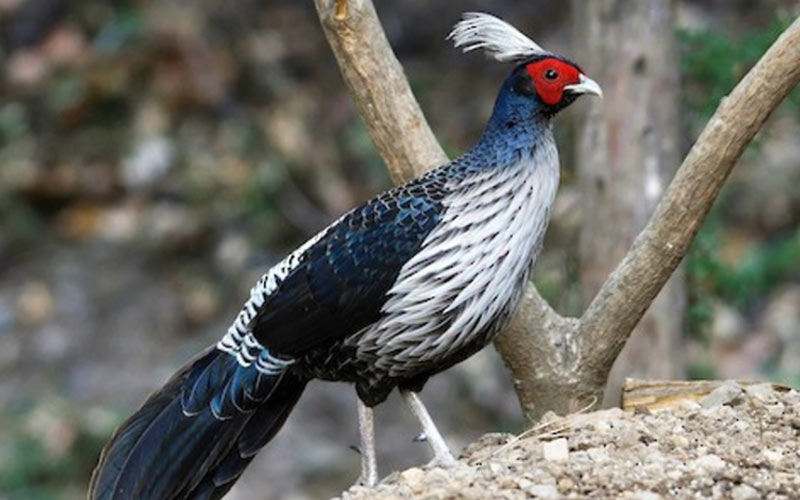
Source: birdfinding.info
The Phasianidae family is a large and diverse group of birds, consisting of 185 species divided into 54 genera. These birds are all heavy and ground-dwelling, and many of them are popular gamebirds.
Among the species in this family are pheasants, partridges, junglefowl, chickens, turkeys, Old World quail, and peafowl. Pheasants are large birds, with brightly colored plumage, typically found in open habitats.
Partridges are smaller than pheasants, and have a more mottled or camouflaged pattern of feathers. Junglefowl are birds native to tropical forests, usually with bolder, more vibrant colors than the other members of the Phasianidae family.
Chickens, turkeys, and Old World quail are all domesticated species. Finally, the peafowl are the most recognizable members of this family, as they are the only species with feathers that can be arched into a crest.
Overall, the Phasianidae family consists of a wide variety of birds, and many of them are popular gamebirds. They all have one thing in common, though: they are all heavy, ground-dwelling birds.
| Kingdom | Animalia |
| Phylum | Chordata |
| Class | Aves |
| Order | Galliformes |
| Family | Phasianidae |
5. Namaqua Dove
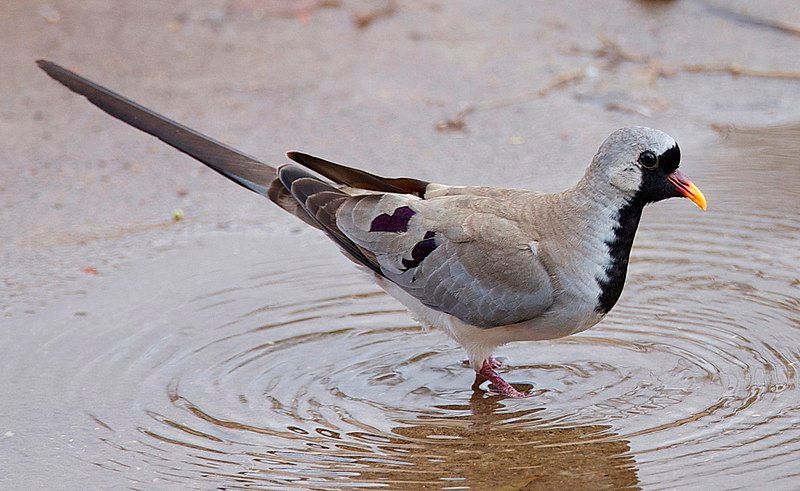
The Namaqua dove is a species of small pigeon found in a variety of regions of Africa and the Middle East. It is the only species within its genus, Oena. This bird can be found in much of Sub-Saharan Africa, including countries such as Ethiopia, Somalia, Kenya, and Tanzania.
It also ranges in the Arabian Peninsula, including Saudi Arabia, Yemen, and Oman, as well as Madagascar. The Namaqua dove is a medium-sized bird, growing to be about 10 inches in length. It has a greyish-brown back, a white head and chest, and a black eye stripe.
Its wings are grey with black spots. The Namaqua dove’s diet consists mainly of grass and seed. It is known to be a very social species, often seen in pairs or small flocks. The Namaqua dove is an important species for the local ecosystem.
It helps control insect populations by foraging on the ground for grass and seed. It is also an important food source for many predators, such as snakes, foxes, and raptors.
This species is listed as Least Concern on the IUCN Red List, meaning it is not currently threatened with extinction. Overall, the Namaqua Dove is a fascinating species of small pigeon found in many areas of Africa and the Middle East.
It plays an important role in its local ecosystems and is not currently endangered. Due to its wide range, it is likely to remain a common species for many years to come.
| Kingdom | Animalia |
| Phylum | Chordata |
| Class | Aves |
| Order | Columbiformes |
| Family | Columbidae |
| Genus | Oena |
| Species | O. capensis |
6. Common Ostrich
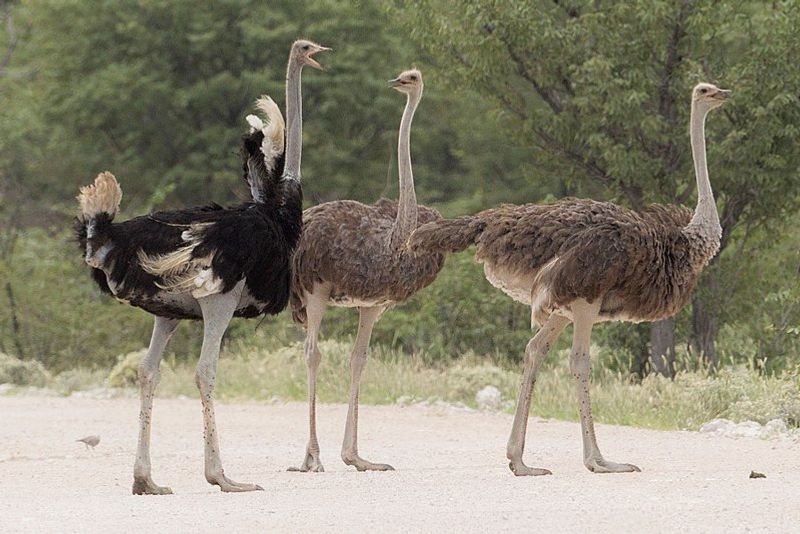
The common ostrich is a large, flightless bird native to certain parts of Africa. It is the largest living species of bird and is the only living member of the ratite order. Ostriches are characterized by their long necks, strong legs, and long, powerful wings.
They are capable of running at speeds of up to 40 miles per hour, making them the fastest birds on land. They are omnivorous, eating vegetation, seeds, insects, and some small mammals.
Ostriches are also able to survive in extreme temperatures, ranging from hot deserts to cold mountain regions. They are known to be social birds, living in groups of up to 50 individuals. Ostriches are known to mate for life and typically lay their eggs in a communal nest.
The common ostrich is the only living species of its genus, Struthio, with its closest relative being the Sudan ostrich, which is now extinct.
| Kingdom | Animalia |
| Phylum | Chordata |
| Class | Aves |
| Order | Struthioniformes |
| Family | Struthionidae |
| Genus | Struthio |
| Species | S. camelus |
7. Mallard
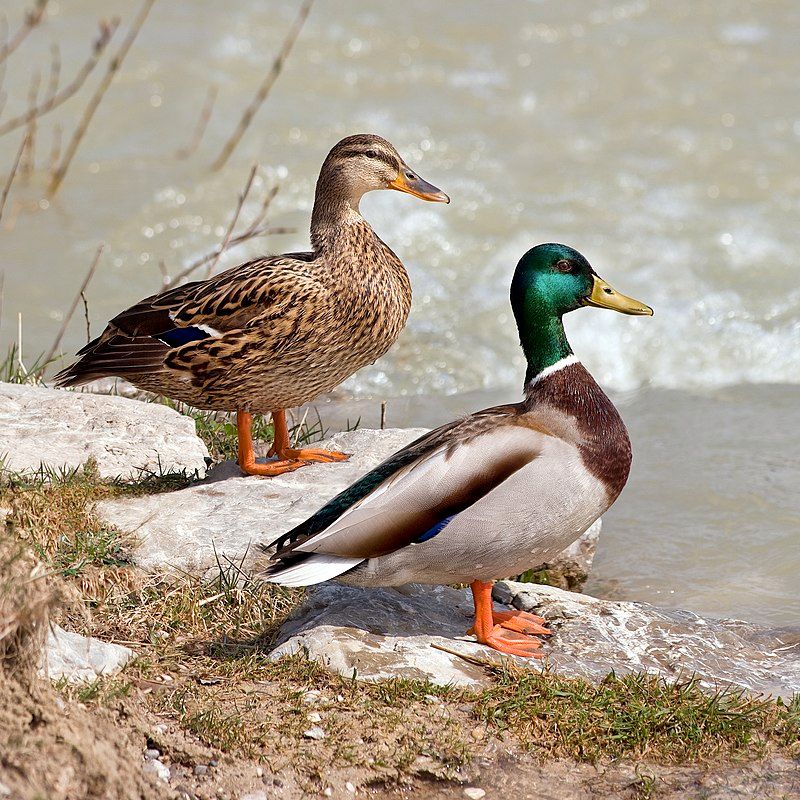
The mallard, also known as the wild duck, is a species of duck found in many areas around the world. It is primarily a dabbling duck, meaning it feeds by upending itself in shallow water and using its bill to sift through the mud and water for food.
The mallard has a wide distribution, breeding in temperate and subtropical areas of the Americas, Eurasia, and North Africa.
It has also been introduced to other areas of the world, including New Zealand, Australia, Peru, Brazil, Uruguay, Argentina, Chile, Colombia, the Falkland Islands, and South Africa. The mallard is an important species to humans, both for its beauty and its economic value.
It has been widely hunted as a game bird and is a popular species for domestication. Domesticated mallards have been bred for many different purposes, such as egg production, meat production, and for show.
The mallard is also an important species to conservationists, as it is a keystone species in their natural habitats. The mallard is a common sight in wetlands, ponds, lakes, and rivers, and is a valuable part of many ecosystems.
| Kingdom | Animalia |
| Phylum | Chordata |
| Class | Aves |
| Order | Anseriformes |
| Family | Anatidae |
| Genus | Anas |
| Species | A. platyrhynchos |
8. Gadwall
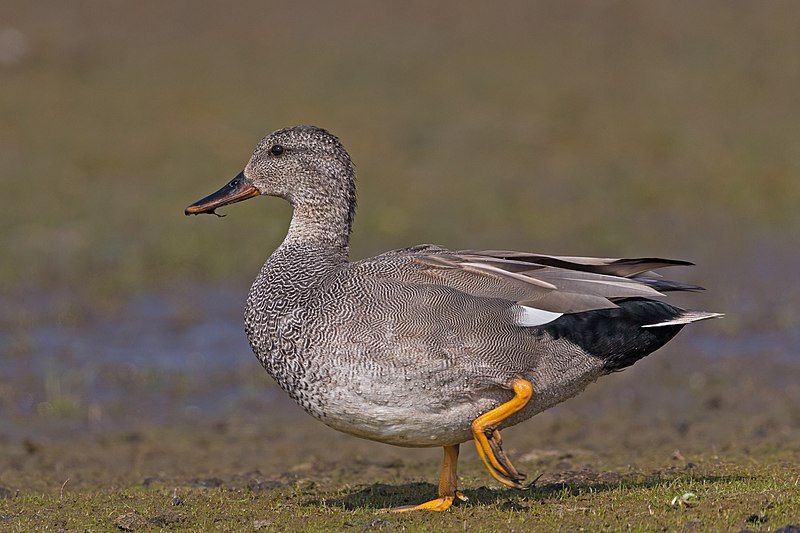
The gadwall is a medium-sized dabbling duck that belongs to the family Anatidae. It is generally found in wetlands, such as ponds, marshes, and lakes, and is a common sight in many parts of the world. The gadwall has a brownish-grey body with a white belly and a black tail.
Its bill is pale yellow and its head and neck are a darker brown. Its wings are grey and white with a black patch near the end. The gadwall is a social bird that is often seen in small groups, although it can also be found alone.
Its diet consists of aquatic insects, mollusks, seeds, and other plant matter. In the winter, it may feed on grains and other food sources on land. The gadwall is a vocal bird that often makes a low-pitched quacking sound.
It is also known for its courtship displays, which involve the male flying up to a high altitude and then gliding down in a zig-zag manner. The gadwall is an important species for the conservation of wetland habitats, as it helps to maintain the health of wetland ecosystems.
| Kingdom | Animalia |
| Phylum | Chordata |
| Class | Aves |
| Order | Anseriformes |
| Family | Anatidae |
| Genus | Mareca |
| Species | M. strepera |
9. Egyptian Nightjar
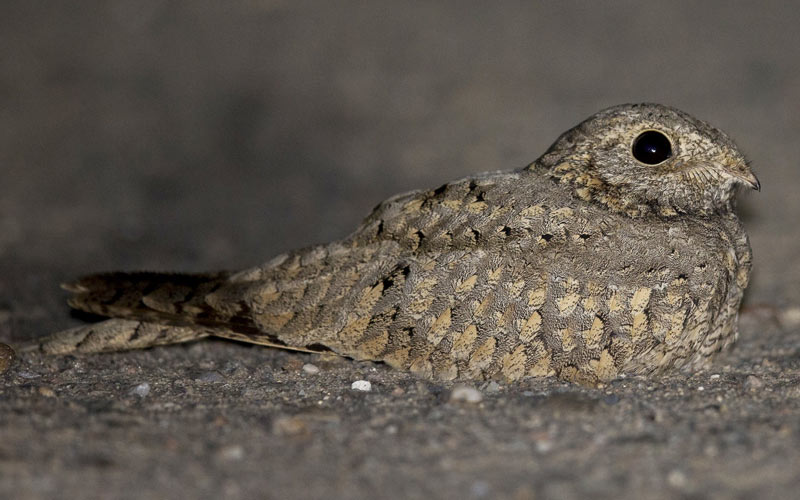
Source: ebird.org
The Egyptian nightjar is a species of medium-sized nightjar that can be found in the regions of southwest Asia and North Africa. During the winter months, this species will migrate to tropical regions of Africa.
Nightjars are nocturnal birds that are usually active during the night and can be identified by their short bills, long wings, and mottled gray and brown plumage. They are typically found in open habitats such as grassland, scrub, and open woodland.
The Egyptian nightjar is an insectivore, meaning that its diet consists mainly of insects. It will forage on the ground as well as in the air, using its long wings to catch flying prey.
This species is also characterized by its shrill, trilling call which is often heard during the night.
| Kingdom | Animalia |
| Phylum | Chordata |
| Class | Aves |
| Clade | Strisores |
| Order | Caprimulgiformes |
| Family | Caprimulgidae |
| Genus | Caprimulgus |
| Species | C. aegyptius |
10. Common Quail
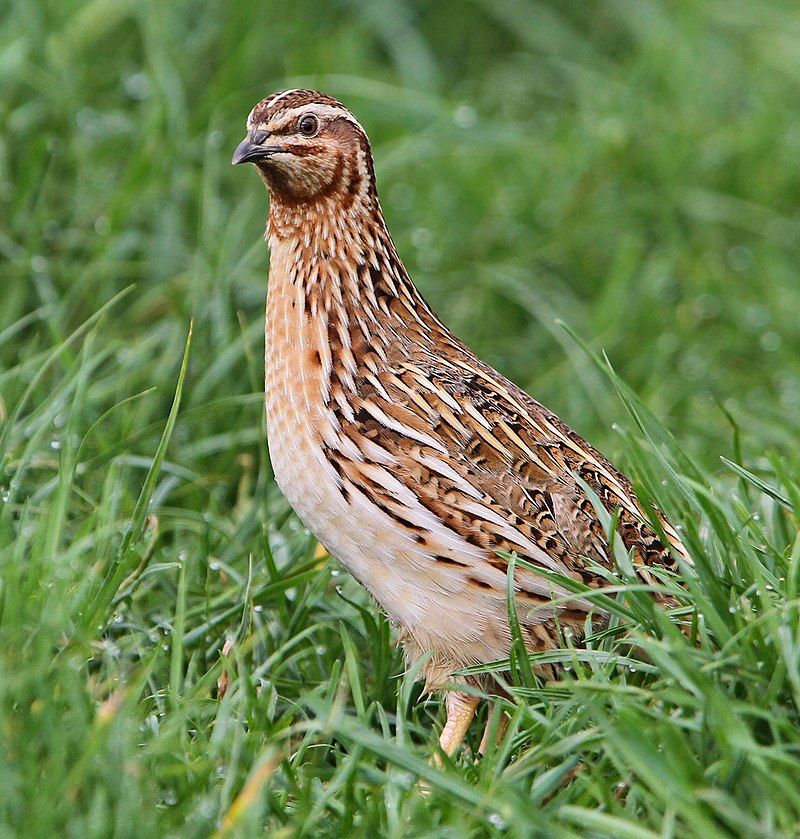
The common quail, also known as the European quail, is a type of small game bird that belongs to the pheasant family Phasianidae.
This species is mostly migratory, breeding in the western Palearctic region and wintering in Africa and southern India. The quail is known for its distinctive call, which consists of three repeated chirps.
This sound is often heard before the bird is seen, making it easier to identify.
The quail is usually quite secretive and can be difficult to spot, but its call serves as a helpful indicator of its presence. The common quail is mainly found on the ground, nesting among tall grasses and shrubs. It feeds on seeds, insects, and other invertebrates.
The bird has a mottled brown and black plumage and is approximately the size of a bantam chicken. The quail is an important game bird in many parts of Europe. It is also a popular bird for hunting in many countries, including the United Kingdom, France, and Spain.
The species is also hunted in North America, where it has been introduced as a game bird. The common quail is an important part of the European avifauna and is a species of conservation concern due to its declining population.
Conservation efforts, such as habitat management, have been undertaken to help protect and preserve this species.
| Kingdom | Animalia |
| Phylum | Chordata |
| Class | Aves |
| Order | Galliformes |
| Family | Phasianidae |
| Genus | Coturnix |
| Species | C. coturnix |
11. Eurasian Wigeon
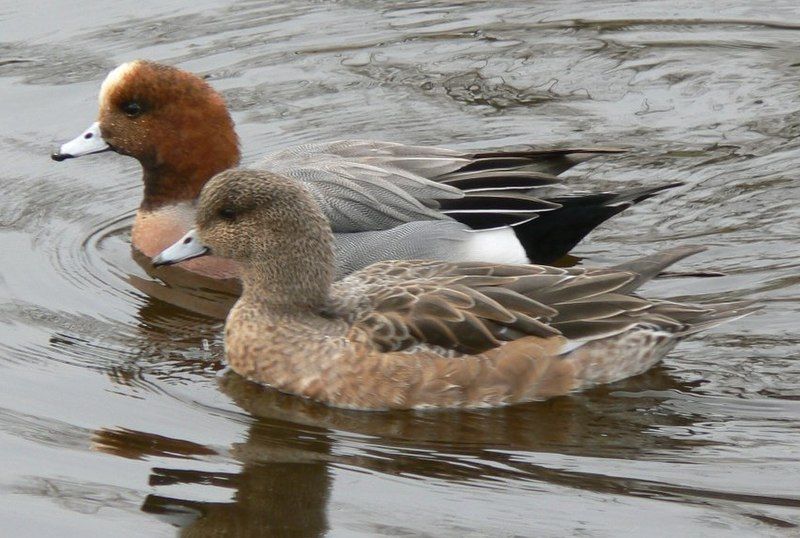
The Eurasian wigeon is a species of dabbling duck, belonging to the genus Mareca. It is also known by other names such as widgeon or wigeon.
The Eurasian wigeon is a common and widespread species across its Palearctic range, which stretches from Europe and Asia, all the way to northern parts of Africa. It is a migratory species, with some populations undertaking long-distance migrations during the winter months.
The Eurasian wigeon is a medium-sized duck, with a body length between 39 and 44 cm. It has a white forehead and crown, a brown and grey body, and a white tail. The adult male has a green patch on the back of the head, while the female has a light brown head.
The Eurasian wigeon feeds on aquatic plants and invertebrates from the water’s surface. It breeds in wetlands, such as lakes, rivers, and marshes, with the males performing courtship displays to attract a mate.
The female builds a nest of grass and down, and incubates the eggs until they hatch. The Eurasian wigeon is an important species for both hunters and conservationists and is currently listed as Least Concern by the IUCN.
| Kingdom | Animalia |
| Phylum | Chordata |
| Class | Aves |
| Order | Anseriformes |
| Family | Anatidae |
| Genus | Mareca |
| Species | M. penelope |
12. Northern Shoveler
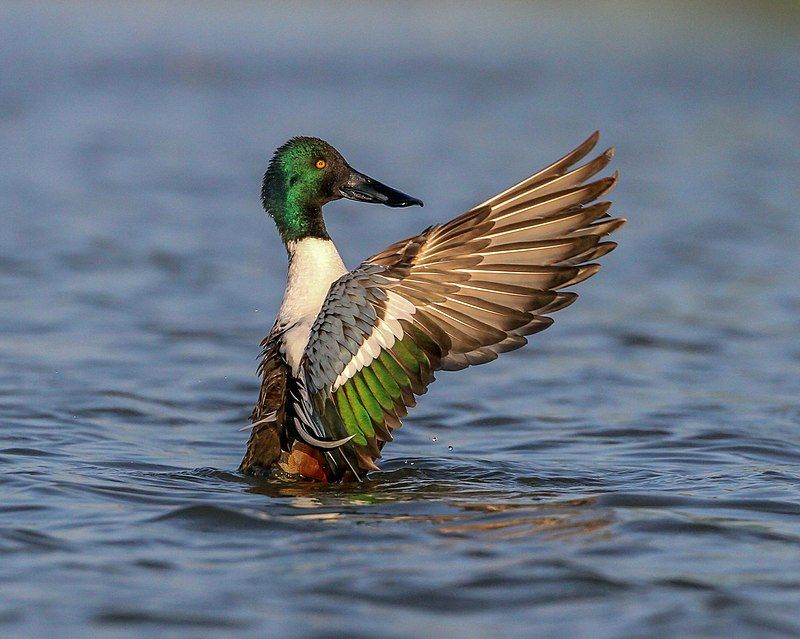
The northern shoveler is a species of duck found in many parts of the world. It is commonly referred to as the “shoveler” in Britain. This species is widely distributed throughout Europe, North America, and the Palearctic region.
During the breeding season, the northern shoveler inhabits northern parts of Europe, where it will remain until winter.
During the winter months, the species migrates south, to southern Europe, the Indian subcontinent, Southeast Asia, Central America, the Caribbean, and northern South America.
| Kingdom | Animalia |
| Phylum | Chordata |
| Class | Aves |
| Order | Anseriformes |
| Family | Anatidae |
| Genus | Spatula |
| Species | S. clypeata |
13. Garganey
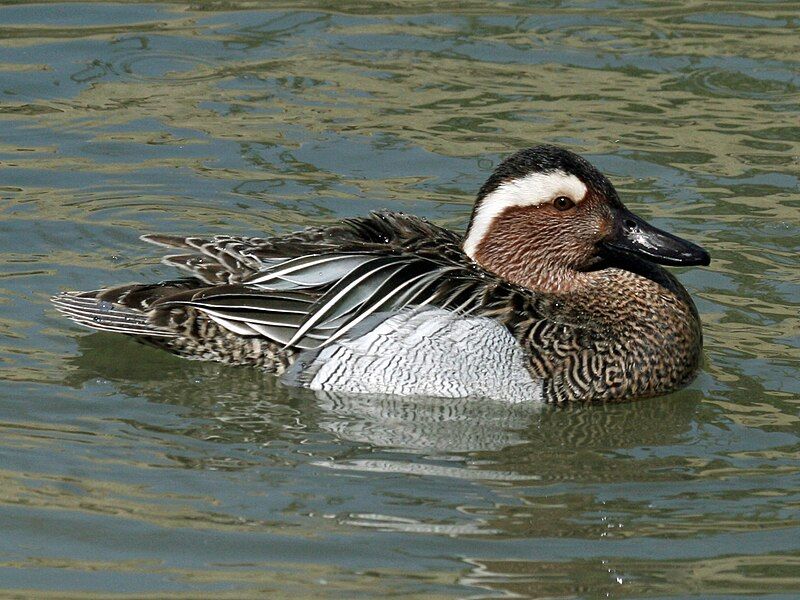
The garganey is a small dabbling duck that breeds throughout much of Europe and the Palearctic region. It is a strictly migratory species, meaning that the entire population of garganey ducks migrates each year.
During the winter of the Northern Hemisphere, the garganey duck population moves to tropical regions such as southern Africa, India, Bangladesh, and Australasia. When they arrive in these regions, they often form large flocks.
During the summer, the garganey ducks return to the Palearctic region to breed. This migration cycle ensures the continued survival of the species and allows the garganey to inhabit both temperate and tropical climates.
| Kingdom | Animalia |
| Phylum | Chordata |
| Class | Aves |
| Order | Anseriformes |
| Family | Anatidae |
| Genus | Spatula |
| Species | S. querquedula |
14. African-collared Dove
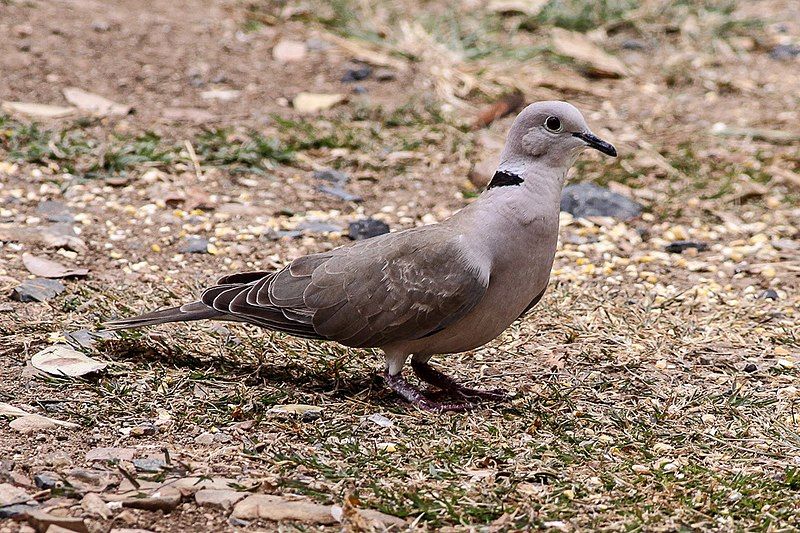
The African collared dove is a small bird native to the Sahel, northern areas of the Horn of Africa, and southwestern Arabia. It is a species that prefers hot and dry climates but is nonetheless found near sources of water.
This species is typically around 26 centimeters in length, making it a relatively small dove. The African-collared dove is an incredibly adaptive species. It can be found in a variety of habitats, from deserts to savannas, and even in agricultural and urban settings.
Its diet is also quite varied, consisting of grains, fruits, and small invertebrates. The bird is also quite sociable, living in small flocks and only becoming territorial during the breeding season.
The African collared dove is a species of conservation concern, due to its specific habitat requirements. As the climate continues to warm, suitable areas for the dove to live are becoming increasingly fragmented.
As a result, the species’ population has been steadily declining, making conservation efforts and protection of its habitat all the more important.
| Kingdom | Animalia |
| Phylum | Chordata |
| Class | Aves |
| Order | Columbiformes |
| Family | Columbidae |
| Genus | Streptopelia |
| Species | S. roseogrisea |
15. Eurasian Whimbrel
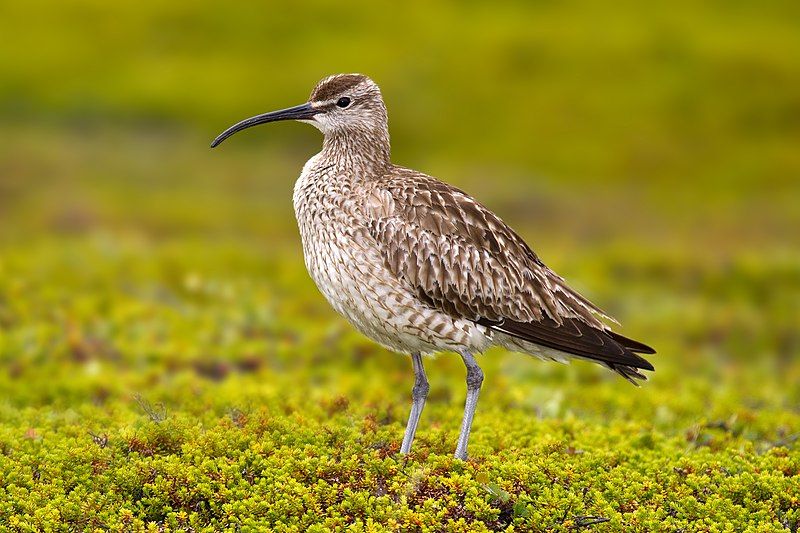
The Eurasian or common whimbrel is a bird from the Scolopacidae family. It is also known as the white-rumped whimbrel in North America. This species of bird is one of the most widespread curlews, and they can be found breeding across much of subarctic Asia and Europe.
This bird is even found in Scotland, which is located much farther south than its other habitats. The Eurasian or common whimbrel can be found in many different habitats, as it is an adaptable species.
It can be found on shorelines, mudflats, marshes, tundra, and even on agricultural land. This species of bird has a long, curved bill and a white rump. It is a medium-sized wader, usually between 30-35 cm in length.
The Eurasian or common whimbrel has a mottled brown plumage, with a pale brown head and neck and darker brown back and wings. The Eurasian or common whimbrel is an omnivore, and its diet consists of insects, worms, molluscs, crustaceans, and occasionally small mammals and birds.
It is a migratory species and can be found in Northern Europe and Asia during the winter months. The Eurasian or common whimbrel is an important species of bird, and it plays an important role in the environment.
| Kingdom | Animalia |
| Phylum | Chordata |
| Class | Aves |
| Order | Charadriiformes |
| Family | Scolopacidae |
| Genus | Numenius |
| Species | N. phaeopus |
16. Arabian Partridge
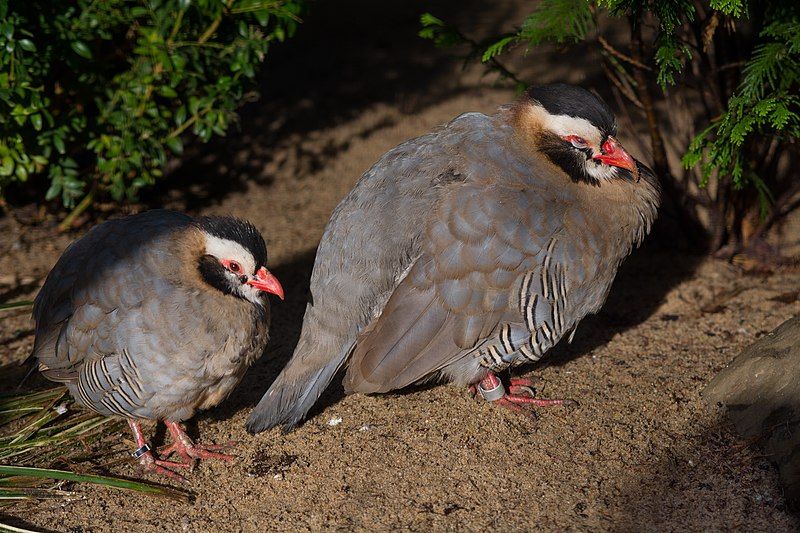
The Arabian partridge is a species of bird that belongs to the family of Phasianidae. It is found mainly in the southern Arabian peninsula, and two subspecies of the Arabian partridge have been identified: A. m. melanocephala and A. m. guichardi.
This species of partridge is also known to hybridize with Philby’s partridge and the rock partridge, which are close relatives. The Arabian partridge is a medium-sized bird of about 20–25 cm in length, with a wingspan of around 40 cm.
It has a short tail and a pointed beak, and its feathers are predominantly light brown in color with black and white markings on the wings and tail.
The male Arabian partridge is slightly larger than the female, and the male’s head is also darker than the female’s. The Arabian partridge is mainly a ground-dwelling bird, preferring open or semi-open grasslands and rocky areas.
It mostly feeds on seeds, fruits, and insects, and it is known to be a social bird, living in small flocks.
Breeding usually occurs in late spring to early summer, and the female partridge typically lays three to four eggs in a nest on the ground. The Arabian partridge is an important part of the local ecosystem, helping to control the populations of small insects and providing food for other avian predators.
It is also a popular game bird and is sometimes hunted for sport. Despite this, the species is not threatened and its population is stable.
| Kingdom | Animalia |
| Phylum | Chordata |
| Class | Aves |
| Order | Galliformes |
| Family | Phasianidae |
| Genus | Alectoris |
| Species | A. melanocephala |
17. White Wagtail
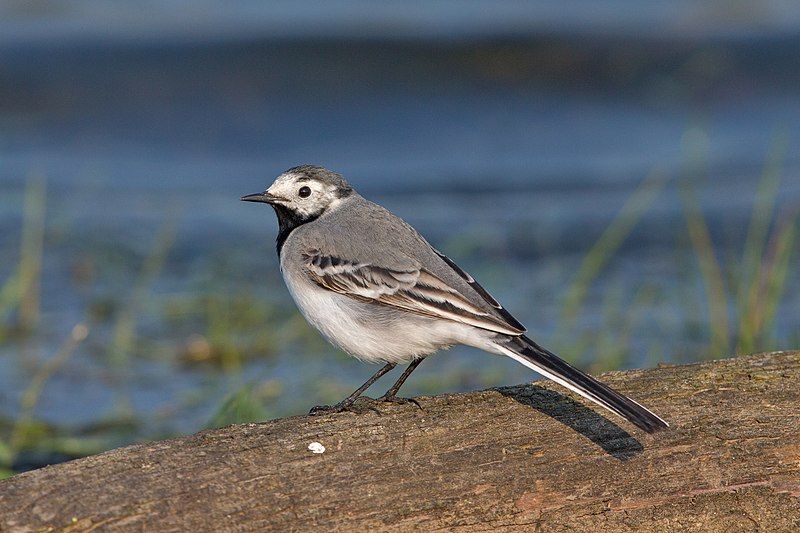
The white wagtail is a small bird belonging to the Motacillidae family, which also includes pipits and long claws. This species is found in various parts of Europe, the Asian Palearctic, and some parts of North Africa. It is also an uncommon breeder in Alaska.
The white wagtail is generally distinguished by its grey-blue upperparts, white underparts, and a long tail that it often pumps up and down as it moves. Its diet consists mainly of small flying insects, which it catches in mid-air.
These birds prefer open habitats near water, with plenty of vegetation and trees to shelter in. During the breeding season, the male will often sing from a prominent perch to attract a mate.
The female will build a cup-shaped nest, usually in a tree or bush, and both parents will help to raise the young.
| Kingdom | Animalia |
| Phylum | Chordata |
| Class | Aves |
| Order | Passeriformes |
| Family | Motacillidae |
| Genus | Motacilla |
| Species | M. alba |
18. Black-crowned Night Heron
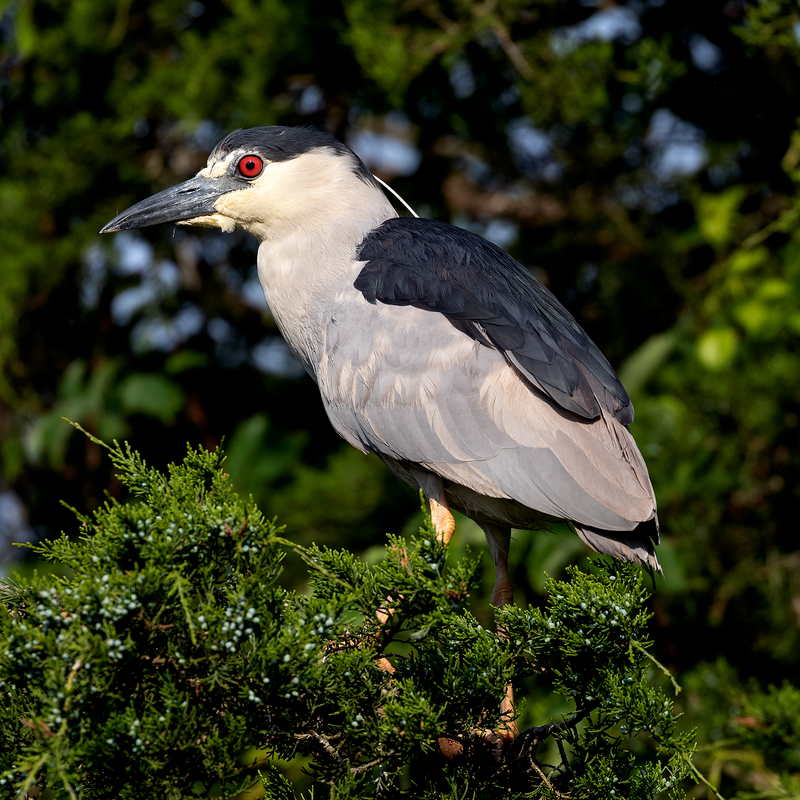
The black-crowned night heron, often referred to simply as the night heron, is a species of heron found throughout much of the world. It is a medium-sized bird that can be identified by its black-crowned head and neck.
The night heron has a wide geographical range, found in parts of Europe, Asia, and both North and South America. It can be found in diverse habitats such as marshes, swamps, shores, and wetlands.
The bird is a solitary creature, spending much of its time alone, and is usually seen in the early morning or late evening. It is a carnivorous species, preying on fish, amphibians, crustaceans, and small mammals.
It is an adaptable species that has been able to thrive in a variety of environments, making it a successful species.
| Kingdom | Animalia |
| Phylum | Chordata |
| Class | Aves |
| Order | Pelecaniformes |
| Family | Ardeidae |
| Genus | Nycticorax |
| Species | N. nycticorax |
19. Common Shelduck
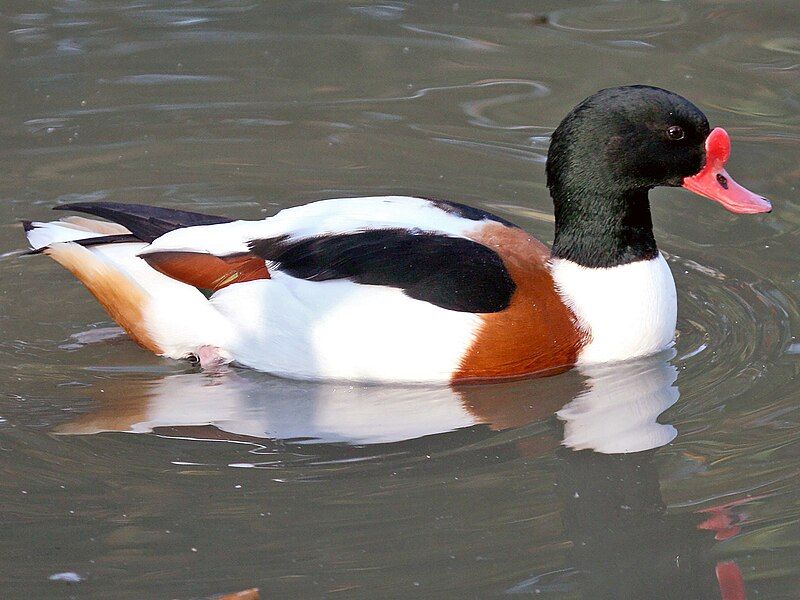
The common shelduck is a type of waterfowl belonging to the shelduck genus, Tadorna. It is widespread and abundant in the Euro-Siberian region of the Palearctic, which encompasses areas of Europe, Siberia, and North Africa.
This species typically breeds in temperate regions during warm months and migrates to subtropical areas in the winter. During the winter, common shelducks can be found in the Maghreb, which is a region in North Africa that stretches from Morocco to Libya.
These birds are gregarious, making them easy to find in large flocks. They are also quite vocal and can be heard from quite a distance. The common shelduck is a highly adaptable species, capable of thriving in a variety of climates and habitats.
They are a popular game species and are hunted in some places, although they are not considered to be threatened with extinction.
| Kingdom | Animalia |
| Phylum | Chordata |
| Class | Aves |
| Order | Anseriformes |
| Family | Anatidae |
| Genus | Tadorna |
| Species | T. tadorna |
20. Chukar
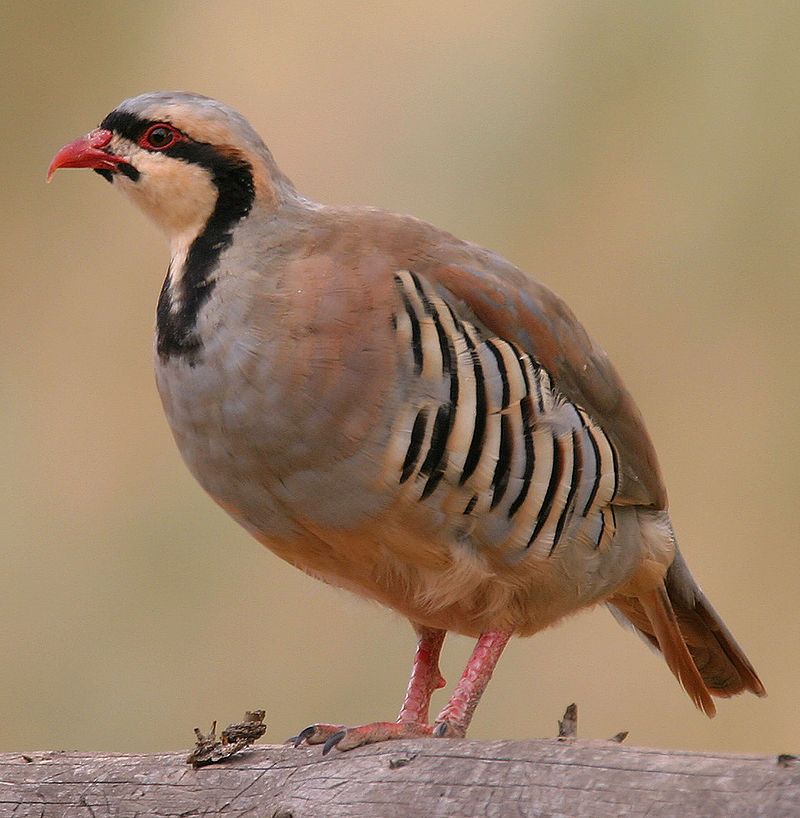
The chukar partridge also referred to simply as chukar, is a Palearctic upland gamebird belonging to the family Phasianidae, which includes pheasants.
It is thought to be part of a larger group of gamebirds referred to as a superspecies complex, which includes the rock partridge, Philby’s partridge, and Przevalski’s partridge. In the past, these four species were often grouped together and referred to as the same species.
| Kingdom | Animalia |
| Phylum | Chordata |
| Class | Aves |
| Order | Galliformes |
| Family | Phasianidae |
| Genus | Alectoris |
| Species | A. chukar |
21. Little Ringed Plover
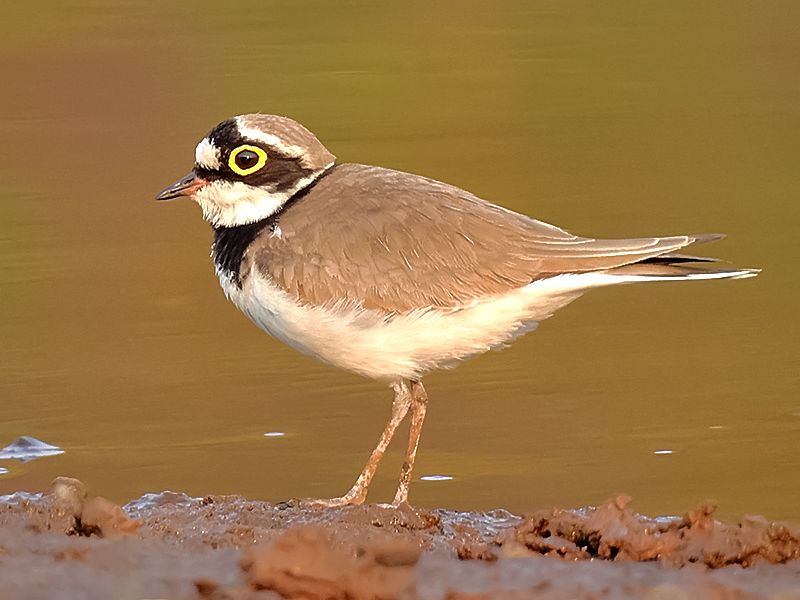
The little ringed plover is a small shorebird found in both the Old and New Worlds. Its scientific name, Charadrius, is derived from the Late Latin word for a yellowish bird mentioned in the fourth-century Vulgate.
This word is derived from the Ancient Greek kharadrios, which refers to a bird found in river valleys. The little ringed plover is a species of plover belonging to the family Charadriidae, which includes other shorebirds such as the Kentish plover and the sandpiper.
The species is widely distributed in both freshwater and saltwater habitats around the world and is commonly seen along beaches and on mudflats. They are known for their distinctive black-and-white markings and their ability to quickly take flight when disturbed.
The little ringed plover is an important bird species, as it is an indicator of the health of coastal and wetland ecosystems.
| Kingdom | Animalia |
| Phylum | Chordata |
| Class | Aves |
| Order | Charadriiformes |
| Family | Charadriidae |
| Genus | Charadrius |
| Species | C. dubius |
22. House Sparrow
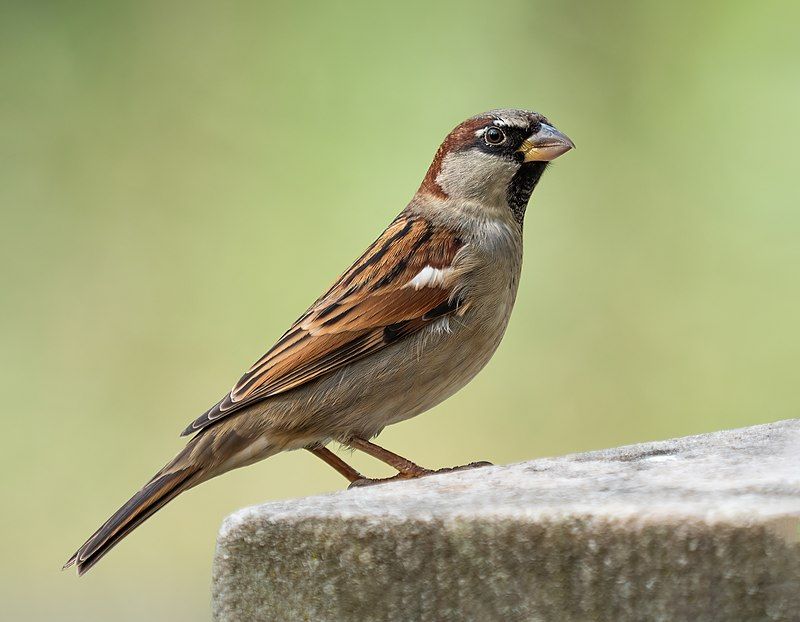
The house sparrow is a small bird native to many parts of the world. It has a typical length of about 16 cm and a mass of 24 to 39.5 g. Females and young birds are generally light brown or grey in color, whereas males are more distinctively marked in black, white, and brown.
The house sparrow belongs to the Passeridae family, which includes many other sparrow species. It is a common sight in many urban and rural environments and is often seen in flocks. House sparrows are omnivorous birds, meaning they consume both plants and animals.
They typically feed on grains, fruits, insects, and even small vertebrates. They are also known to scavenge human-produced food sources such as crumbs and discarded food. House sparrows are social birds, living in large flocks and often nesting in close proximity to humans.
They are an important part of the ecosystem, helping to disperse seeds and control insect populations.
| Kingdom | Animalia |
| Phylum | Chordata |
| Class | Aves |
| Order | Passeriformes |
| Family | Passeridae |
| Genus | Passer |
| Species | P. domesticus |
Conclusion
Birds in Al Madinah are a wonderful sight to behold. They are a symbol of the city’s natural beauty and a reminder of the importance of environmental conservation. They provide a calming and peaceful atmosphere to those who take the time to appreciate them.
The diversity of species found in Al Madinah is a testament to the city’s commitment to preserving its natural heritage and providing a safe and supportive environment for its wildlife.